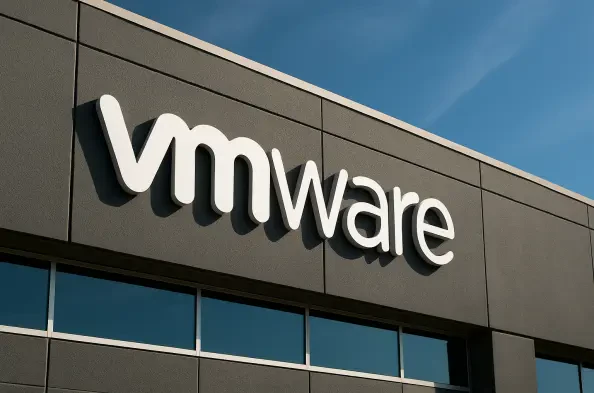The virtualization landscape is undergoing a seismic shift as VMware customers grapple with the end of general support for vSphere 7.x, a platform that has long been the backbone of enterprise IT environments, with the critical deadline having passed on October 2, 2024. Broadcom’s acquisition of VMware, finalized nearly two years ago, has introduced sweeping changes that have left many organizations at a pivotal moment, forcing tough decisions about whether to upgrade, migrate to alternative solutions, or seek interim support amidst escalating costs and operational challenges. This turning point not only signals the end of an era for a widely relied-upon technology but also raises broader questions about the future of on-premises virtualization and the trust placed in Broadcom’s strategic direction. As IT leaders navigate this complex terrain, the stakes are high—business continuity, security, and budget constraints hang in the balance. The path forward demands a closer look at the driving forces behind these disruptions and the viable options available to enterprises in this evolving ecosystem.
Facing the Deadline: The Impact of vSphere 7 Support Termination
The cessation of general support for vSphere 7.x, along with associated components like vSAN 7.x and vCenter 7.x, represents a defining moment for countless VMware users who relied on this platform for server virtualization. Initially set to conclude on April 2, 2024, Broadcom extended the deadline by six months to October 2, 2024, in an effort to provide additional planning time for affected organizations. However, now that the date has passed, any enterprise that has not upgraded or renewed under Broadcom’s revised terms faces the harsh reality of losing access to critical security patches, software updates, and official technical assistance. This cutoff poses a significant risk, leaving systems exposed to potential vulnerabilities at a time when cyber threats are increasingly sophisticated. For many, this deadline has served as a stark reminder of the urgency to reassess their virtualization strategies, especially for those who delayed action amid the uncertainty following the acquisition.
Beyond the immediate security concerns, the end of support has broader implications for IT operations and long-term planning within enterprises still running vSphere 7.x. The absence of official updates means that organizations must either allocate resources to mitigate risks internally or accelerate their transition to supported versions like vSphere 8, a process that is neither quick nor risk-free. Many IT teams find themselves caught between the need to maintain stability in mission-critical environments and the pressure to adapt to Broadcom’s new ecosystem. This situation is further complicated by the fact that some businesses may lack the budget or technical expertise to execute such transitions swiftly. As a result, the deadline has not only heightened operational stress but also underscored the importance of strategic foresight in navigating vendor-driven changes, pushing companies to evaluate their dependency on VMware’s offerings in a rapidly shifting market.
Navigating Broadcom’s Strategic Shift: Subscriptions and Rising Costs
Broadcom’s transformation of VMware’s business model has emerged as a significant challenge for customers accustomed to the predictability of perpetual licensing. The pivot to a subscription-based structure, coupled with the bundling of numerous products into the VMware Cloud Foundation (VCF) suite, has led to substantial cost increases that have caught many off guard. Reports from major players like AT&T highlight price surges exceeding 1,000%, while Gartner analysts have documented hikes up to three times the original licensing fees for some deployments. Such financial pressures are straining IT budgets already stretched thin by other digital transformation priorities. For organizations that have long relied on VMware’s solutions, this shift feels less like an evolution and more like a disruption, prompting difficult discussions about the affordability and value of remaining within Broadcom’s ecosystem.
The financial burden is only part of the equation—adopting VCF or upgrading to newer versions like vSphere 8 introduces operational complexities that cannot be overlooked. Upgrading critical systems often demands months of meticulous planning, testing, and execution to avoid disruptions that could impact business continuity. For larger enterprises with sprawling IT environments, the process becomes even more daunting, as compatibility issues and potential downtime risks loom large. Broadcom’s vision of a cloud-centric, streamlined future may align with industry trends, but for many customers, it represents a steep learning curve and an unwelcome departure from familiar practices. This tension between vendor strategy and customer readiness has fueled a growing sense of unease, as businesses weigh the costs—both monetary and operational—of aligning with Broadcom’s roadmap against the potential benefits of staying the course.
Customer Sentiment and Operational Challenges in Transition
Among VMware’s customer base, there exists a palpable mix of appreciation for the robustness of the technology and frustration with Broadcom’s management of the post-acquisition transition. Many organizations report feeling sidelined, with delays in receiving clear guidance on licensing renewals or support options as critical deadlines have approached and passed. Despite Broadcom’s assertions of proactive communication through blog posts and sales team outreach, the lingering perception of inadequate engagement continues to undermine confidence. This disconnect has created an environment of uncertainty, where IT leaders struggle to make informed decisions about their virtualization infrastructure at a time when clarity is most needed, ultimately eroding trust in a vendor once seen as a reliable partner.
Operationally, the timing of Broadcom’s changes has exacerbated the challenges faced by IT teams already navigating tight resources and competing priorities. When vSphere 8 was introduced in late 2022, coinciding with the acquisition turmoil, many customers adopted a cautious stance, wary of early-version bugs and the inherent risks of upgrading core systems. Now, with support for vSphere 7.x no longer available, those hesitations have translated into a race against time to implement upgrades or alternative solutions. The reality is that such transitions are resource-intensive, often requiring specialized expertise and significant downtime planning. For enterprises with limited engineering capacity, this creates a bottleneck that threatens to disrupt operations, highlighting the delicate balance between maintaining stability and embracing necessary change in a vendor-driven landscape.
Exploring Alternatives and Temporary Lifelines for Enterprises
For organizations unwilling or unable to adhere to Broadcom’s new terms, the search for alternative virtualization solutions has gained momentum as a means of reducing dependency on VMware’s ecosystem. Platforms from competitors like Nutanix and Red Hat present credible options for on-premises needs, while cloud-based deployments offer a path to minimize physical infrastructure footprints. However, migration is far from a simple endeavor—switching vendors can span years and incur substantial costs, as evidenced by estimates like AT&T’s projected $50 million expense to transition platforms. This reality underscores the complexity of disentangling from VMware’s deeply integrated systems, particularly for enterprises with extensive deployments. As a result, while alternatives hold promise, they often represent a long-term strategy rather than an immediate escape from the challenges posed by the end of vSphere 7.x support.
In the interim, third-party support providers have emerged as a critical resource for businesses needing more time to chart their course. Companies like Spinnaker Support offer ongoing assistance for those remaining on vSphere 7.x, providing a temporary buffer against the loss of official updates and patches. This type of support is not positioned as a permanent fix but rather as a stopgap, enabling enterprises to delay subscription commitments or plan migrations at a manageable pace. Such services have become increasingly relevant in the wake of customer unrest following Broadcom’s acquisition, offering breathing room to IT teams under pressure. While these solutions help mitigate immediate risks, they also highlight the broader need for strategic planning, as organizations must eventually commit to a sustainable path—whether through upgrades, migrations, or a hybrid approach tailored to their unique operational demands.
Charting the Path Ahead: Strategic Considerations for VMware Users
Looking back, the journey for VMware customers following the end of vSphere 7.x support on October 2, 2024, revealed a landscape marked by disruption and adaptation. Broadcom’s strategic overhaul, with its emphasis on subscriptions and bundled offerings like VMware Cloud Foundation, reshaped the expectations and realities for enterprises, often at a steep financial and operational cost. The frustration over communication gaps and the complexity of transitions painted a challenging picture for many who once saw VMware as a steadfast ally in virtualization. Yet, amidst these hurdles, the response from the market—whether through exploring competitor platforms or leveraging third-party support—demonstrated resilience and a willingness to adapt to an evolving industry dynamic.
Moving forward, the focus for affected organizations should center on actionable strategies to secure their IT environments while aligning with long-term goals. Prioritizing a thorough assessment of current systems to identify vulnerabilities left by unsupported software is a critical first step. From there, engaging with trusted advisors or interim support providers can offer the necessary stability to plan upgrades or migrations without haste. Additionally, exploring hybrid models that balance on-premises and cloud solutions could provide flexibility, mitigating the risks of vendor lock-in. As analyst predictions from Gartner and Forrester suggest a notable shift toward cloud workloads by 2028, businesses would be wise to begin piloting such transitions incrementally. Ultimately, the path ahead lies in proactive decision-making, ensuring that the lessons of this transition inform a more resilient virtualization strategy for the future.






